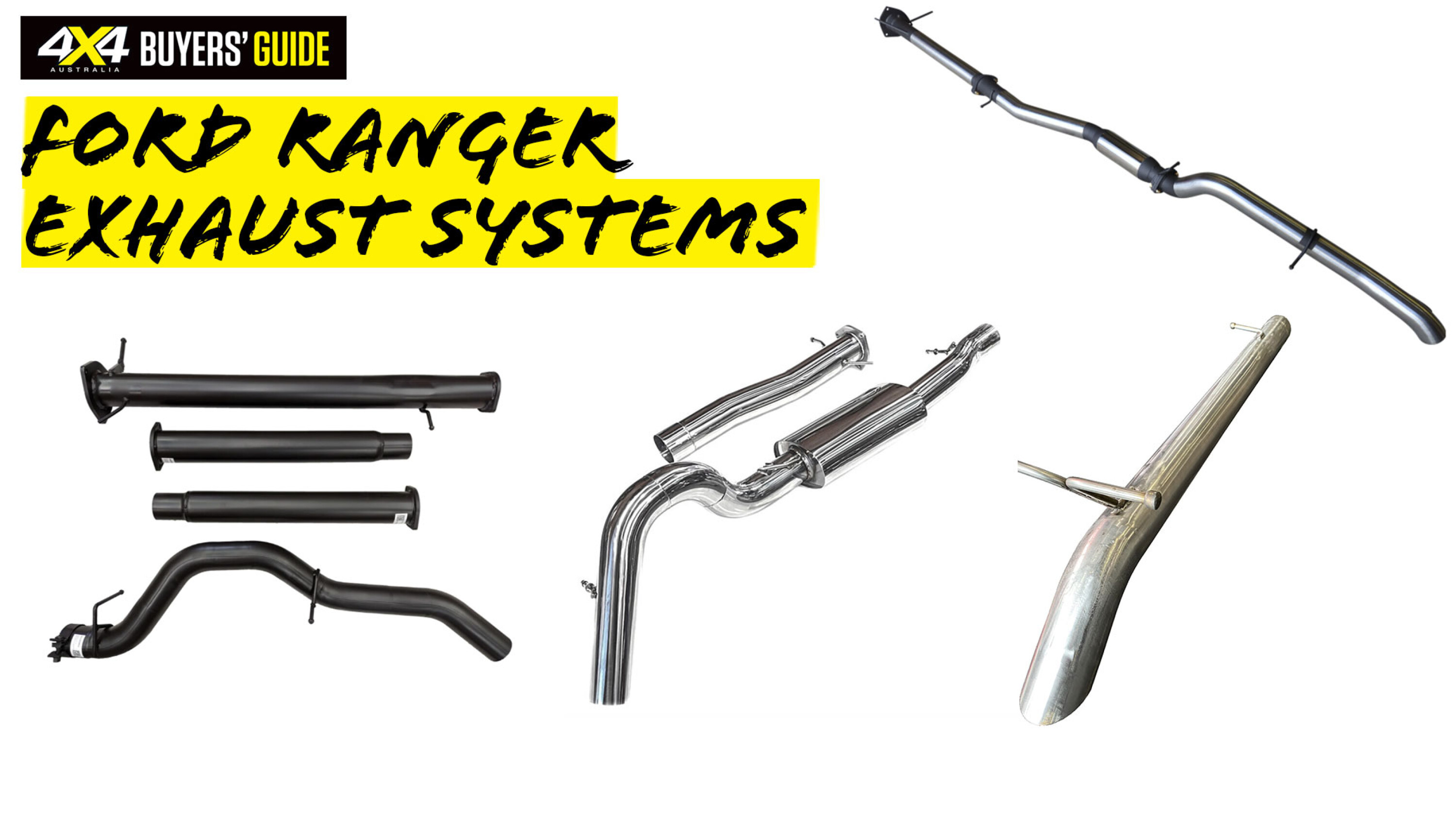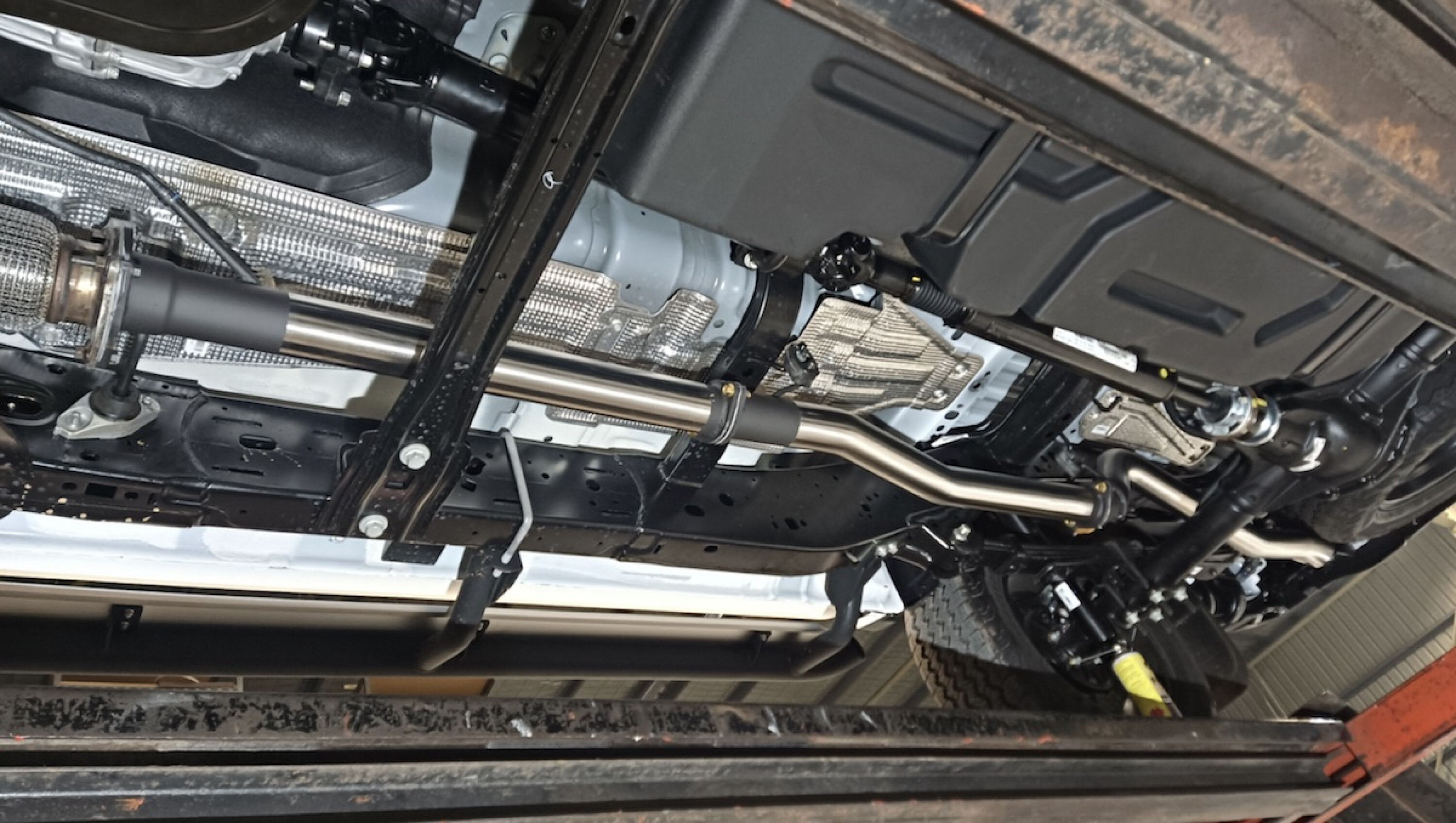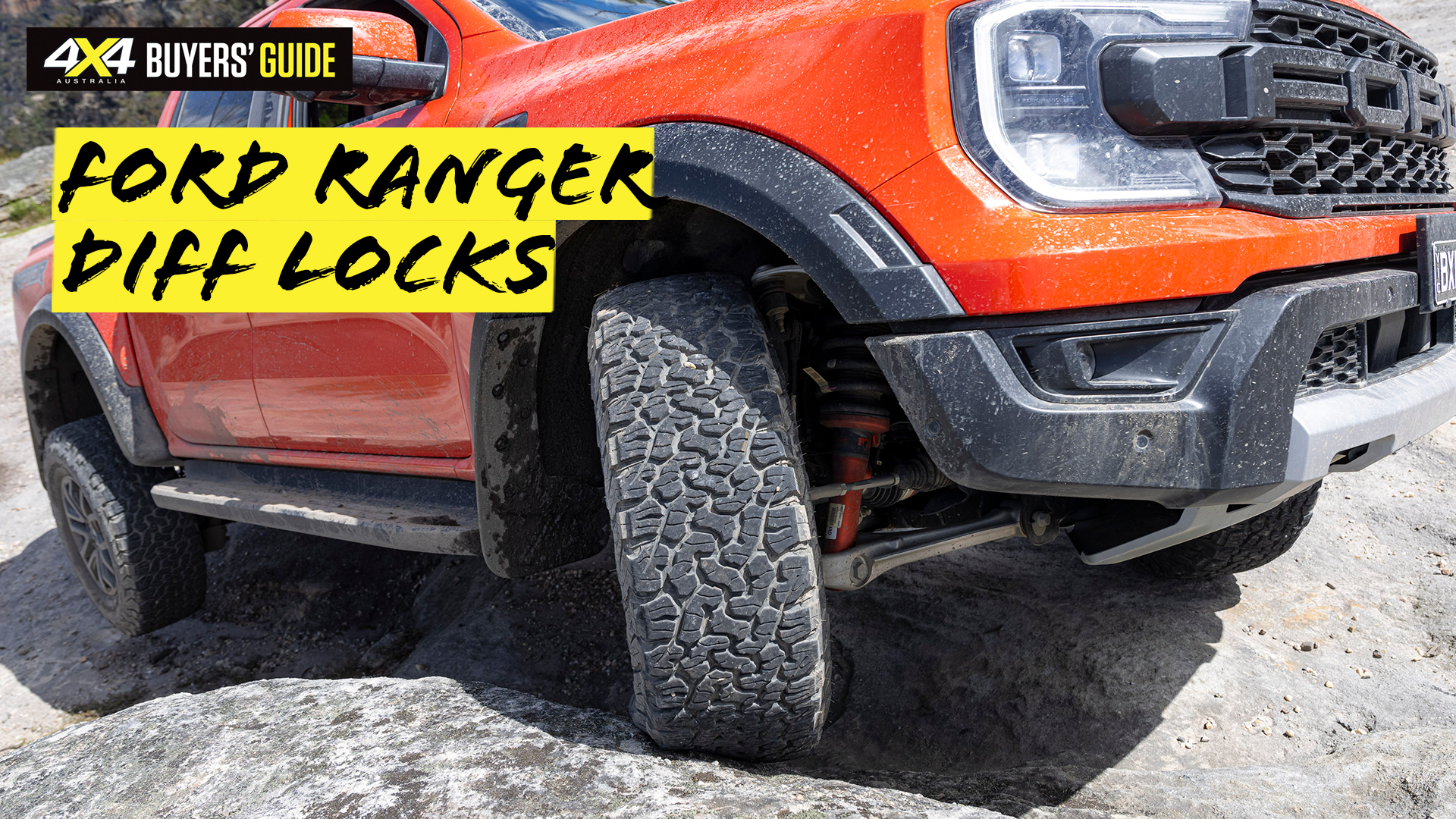The Ranger’s V6 has a satisfying rumble which, quite simply, should be unleashed. The factory exhaust system keeps this rumble contained, but you can release it with a simple mod.
A DPF-Back exhaust system opens up the exhaust system after the DPF. You get to hear what the V6 is capable of, while still keeping on the right side of the law.
Here are three products we recommend. They’re intended as a starting point, to give you an idea of what’s available.
What it is: A replacement exhaust system.
Why you need it: It gives the Ranger a distinctive exhaust note, usually deeper and louder than factory.
Buying tips: The exhaust system should be made from 304 stainless steel. It won’t rust, unlike 409 stainless steel or aluminised steel.
PPD Performance 4” stainless DPF back exhaust
A cost-effective upgrade for the new-gen 3.0L V6 Ranger. The system is designed to replace the factory exhaust and unleash the full potential of the vehicle. It comes in three volume options, allowing the driver to choose the sound that suits their preferences.
The system is made from mandrel-bent, 304 grade stainless steel piping that maximises the flow of exhaust gases, resulting in uncompromising flow, performance and sound. The material is resistant to rusting and corrosion, ensuring it lasts longer than cheaper options. The exhaust is designed for easy bolt-on installation with a fitting kit that includes all required bolts, gaskets and clamps.
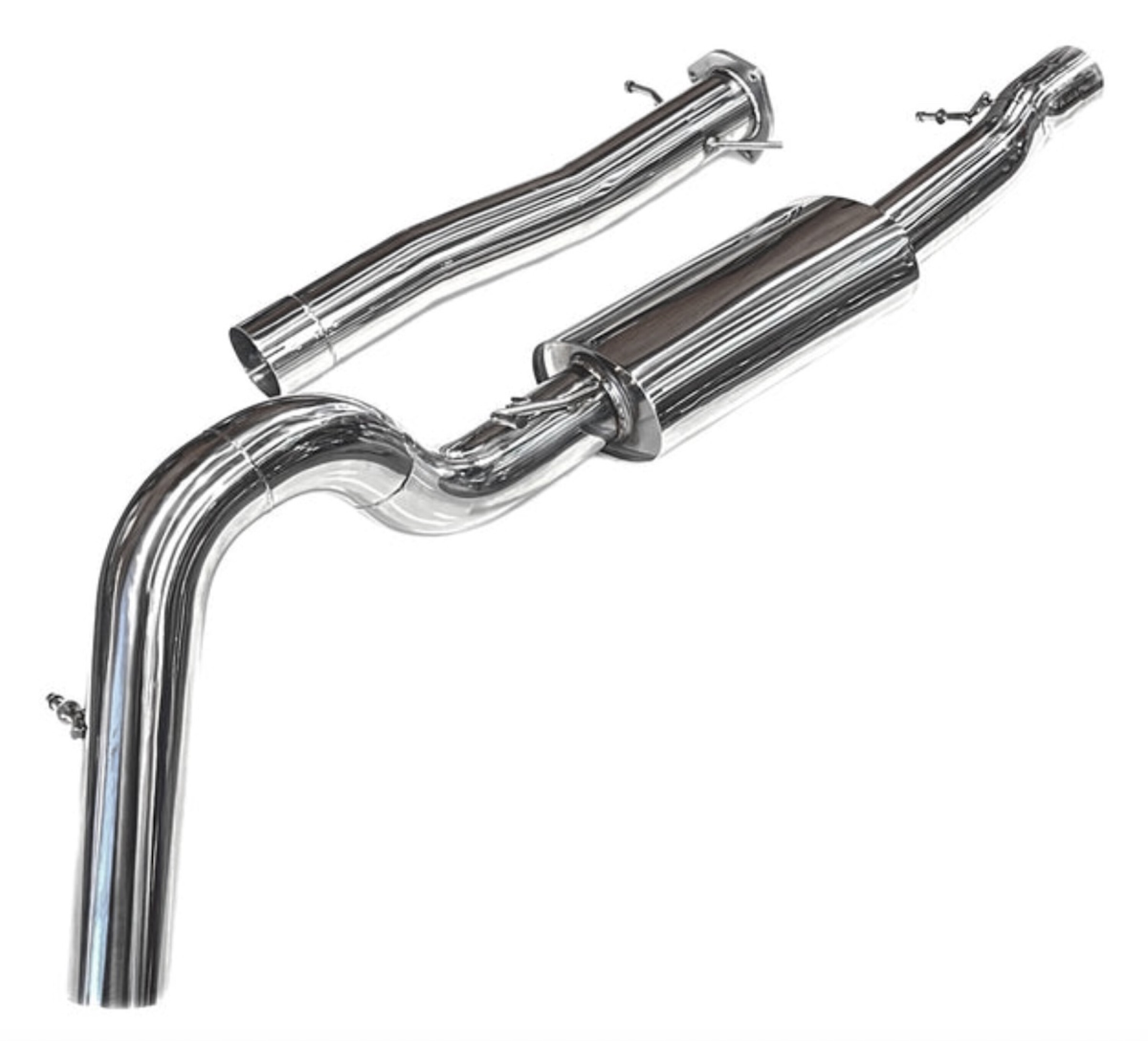
Specifications:
- Material: 304 stainless steel
- Diameter: Four inches
- Muffler option: Straight-through; resonator; muffler
Things we like
- Uses factory hanger points
- Supplied with all bolts, gaskets, and clamps
- Pressure port for factory sensor
Not so much…
- Exhaust exit hangs low
- Material: 304 stainless steel
- Diameter: Four inches
- Muffler option: Straight-through; resonator; muffler
The Outlaw Exhausts DPF back performance exhaust system for the 2022+ Ranger is proudly Aussie made. The intermediate pipe is made of 3 1/2″ S409 stainless tube and is painted in a high-temperature Satin Black finish. It connects directly to the diesel particulate filter (DPF) and includes a 10mm tube to reconnect the emissions sensor.
The inline resonator pipe has been designed to improve exhaust flow and sound compared to traditional muffler or resonator installations. The kit comes with a resonator delete pipe, which allows for maximum flow and sound for enthusiasts.
The tailpipe assembly is mandrel bent from 3″ S409 tube and connects to the resonator pipe with a single bolt clamp. The kit also offers an optional side exit pipe upgrade. This system is designed to improve the performance and sound of a vehicle while maintaining emissions compliance.
Things we like
- Australian made
- High-quality materials
- Inline resonator pipe
Not so much…
- N/A
- Material: S409 stainless steel
- Diameter: 3 to 3.5 inches
- Muffler option: N/A
The BPT Motorsport DPF-back sports short exhaust is designed for the next-gen Ranger V6 and is designed to replace the factory exhaust system and improve the performance of the vehicle. The product number for this part is DPFNG30.
Things we like
- One piece, no welds
- Complies with emissions and noise ADRs
- Simple installation
Not so much…
- No muffler option
- Material: 304 stainless steel
- Diameter: Three inches
- Muffler options: N/A
The Manta Performance exhaust system is a stainless steel DPF-back exhaust designed for the next-gen V6 Ranger. The system includes a three-inch stainless steel DPF connector pipe, centre pipe, rear connecting pipe, bolts and gaskets. Manta Exhausts is a reputable manufacturer of quality exhaust systems designed for Australian conditions. The exhaust system is designed to unlock serious performance and produce an awesome note from the V6 engine.
The DPE/Manta Range offers outstanding quality and fitment guarantee, and these systems are manufactured in either aluminised or stainless steel piping to suit all conditions.
Things we like
- Stackable
- Hi-top lids available
- Water and dust resistant
Not so much…
- Not lockable
- Material: Stainless steel
- Diameter: Three inches
- Muffler options: N/A
An aftermarket exhaust system is a replacement exhaust system for the factory standard exhaust system. The three main types of exhaust systems are: 1. DPF-Back, which replaces the standard exhaust from the outlet of the DPF to the exhaust exit. This is the simplest and cheapest option, and doesn’t affect the DPF. 2. DPF-Delete, which replaces the DPF and exhaust system all the way back to the exhaust exit. (It is illegal to remove the DPF. We’ll talk about this later.) 3. Turbo-Back, which replaces the entire exhaust system from the turbo outlet to the exhaust exit.
Why you need it
Standard exhaust systems are a compromise between performance, sound levels, and compliance with emissions regulations. If you’re simply after a deeper exhaust note, then a DPF-Back exhaust is the best option.
You can choose between different types of mufflers, depending on the noise level you’re after. You won’t get a noticeable change in performance. The biggest constraints on exhaust airflow are in the downpipe after the turbo, within the DPF, and in the mufflers. So if you don’t changethem, you’re really not increasing performance by much at all.
Most DPF-Back systems either replace the muffler with their own muffler or give you the option to remove it altogether. In this case you’ll likely get a small performance benefit. However, it’s unlikely you’ll notice the difference.
Turbo-Back systems replace the entire exhaust system. They’re designed to increase exhaust flows and therefore engine performance. However, modern diesel engines have complex emissions systems and usually a pressure sensor or two in the exhaust system. This means you’ll probably need to cough up for an ECU remap at the same time. Whether the extra performance is worth the money is something you need to consider.
Buying tips
Deleting the DPF (diesel particulate filter) is illegal. There’s no getting around this. A DPF is there for a reason. It stops toxic crap from spewing out of your exhaust pipe… known carcinogens, soot particles which lodge in your lungs, and so on.
Vehicle manufacturers don’t fit DPFs for the sheer pleasure of it. They do it so their vehicles comply with emissions regulations. If you decide to remove a DPF, that’s your choice. But before you do, think carefully…Many aftermarket businesses openly advertise DPF-Delete exhaust systems. What they don’t advertise is that you’re up for an $11,000 fine if you get caught – $22,000 if it’s registered as a company vehicle.
Right now, it’s rarely enforced. However, there’s no reason in the world why government authorities won’t crack down in the near future. They’d make fortune in fines if they did. And it’s dead easy to tell if a vehicle has a DPF-delete. Stand on any street corner and listen for the turbo whistle coming from a new or near-new diesel ute. The driver might as well paint a huge sign across the tailgate saying, “This vehicle has a DPF-delete”.
The EPA are just a bit more technical than this. They have the gear to instantly detect whether your DPF is working, by monitoring vehicle emissions from the tailpipe. The roadside test takes a couple of minutes… and could be the most expensive two minutes of your life.
DPF-deletes also void your insurance. You can guarantee an insurance assessor will look closely at your DPF during an assessment. And why wouldn’t they? A vehicle without a DPF is considered unroadworthy, so it’s an easy way to reject a claim.
By now you won’t be surprised to learn that DPF-deletes void your vehicle warranty. No vehicle manufacturer is going to warrant a car if you’ve made it unroadworthy. And like any insurance assessor worth their salt, a mechanic will know instantly if the DPF has been deleted. And yes,that includes the DPFs which have the innards removed.
Whether you decide to delete a DPF is ultimately your decision. But be aware of the potential and very real implications… $11K fine, no insurance, no warranty, not to mention the crap you’re skewing into the air we all breathe. Is it really worth the risk?
What else to look out for?
People generally go for DPF-delete or Turbo-Back exhaust upgrades because they’re chasing performance. They want the engine to breathe easier, so it can produce more power. Just be aware that either option involves an expert plugging their laptop into your vehicle and doing some very specific electronic wizardry.
Exactly what they do depends on the vehicle make and model. They might have to recalibrate back-pressure sensors, trick the ECU into thinking a certain sensor’s still there when it’s not, and so on. You pay for this expertise. It can add substantially to the price of the exhaust upgrade. Chances are, it’ll also void your vehicle warranty.
Be aware, if you take your vehicle to a dealer for services, they often do software updates. When they upload the software, they’ll likely overwrite all those software changes you just paid the exhaust supplier for. You’ll end up with a dashboard full of warning lights, lit up like a Christmas tree… and most likely a vehicle stuck in Limp mode.
Best materials
The best material is 304 (or 316) stainless steel because it doesn’t rust. Rust is a big factor in modern diesel exhaust systems. Why? Because with modern emissions technology, diesels no longer emit a cocktail of soot and crap. This gunk used to coat the inside and prevent it from rusting, before emission controls were a thing. Now however, the exhaust from the tailpipe is clean, so exhaust systems tend to rust out.
Grades of stainless steel other than 304 or 316 usually contain more iron and are prone to rusting. The best way to check is with a magnet. Stainless steels with a low iron content are non-magnetic. If it doesn’t stick to the exhaust, then you’ll be fine.
So, which one?
If you’re after a louder and/or deeper rumble from your new 4×4, a DPF-Back exhaust system is the way to go. They’re easy to install, relatively cheap, and you’ll find a muffler to suit your preferred noise level if you shop around.
If you’re after performance, that’s a whole different ball game. There are so many variables, depending on the make and model. You’ll most likely need an installer who can re-program the ECU to suit the system, and you might even be up for a full ECU remap. Talk to a few suppliers and see what they offer before forking out for a Turbo-Back exhaust system.
We spoke in detail about potential warranty issues. That’s something you need to decide – is the extra performance worth voiding the warranty? What other performance upgrades can you do without voiding the warranty? That’s why you need to find reputable suppliers who can help guide you through these issues.
Note: DPF-deletes are illegal and 4×4 Australia does not condone them in any way
How we review products
4X4 Australia has been reviewing four-wheel drive vehicles and aftermarket products for more than 40 years.
When looking for the best accessories for your make and model of 4WD, there are some things essential to making sure you have the best off-roading experience.
When we compare products, here are some of the things we consider:
- Warranty
- Build quality
- Value for money
- Time and ease to set-up/install
- Weight
- Fit and finish
- How well it gets the job done
- What materials they’re made from
- Corrosion/UV resistance
- Coatings
- Compatibility with other accessories
- Compliance with ADRs and vehicle safety systems
- Country of manufacture
- Load ratings, to determine what’s the best product across each price point.
Disclosure: When you buy through our links, we may earn a commission. We also include products that we do not earn a commission from.
We recommend
-
 Ranger Accessories
Ranger AccessoriesFord Ranger suspension load assists
An easy way to increase support and stability for your Ranger when carrying heavy loads or towing trailers
-
 Ranger Accessories
Ranger AccessoriesFord Ranger recovery points
Rated recovery points are an essential accessory for off-road enthusiasts
-
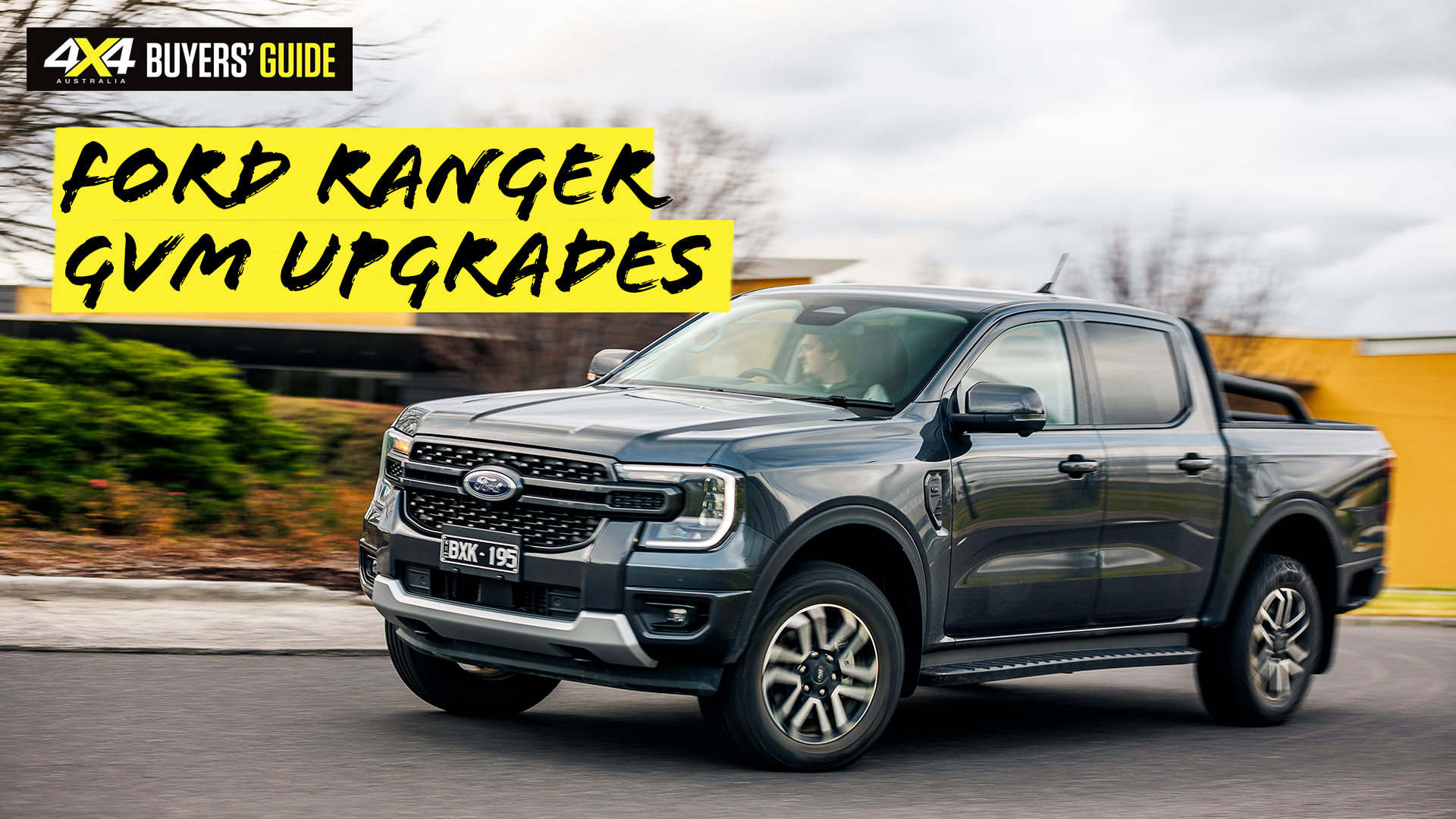 Ranger Accessories
Ranger AccessoriesFord Ranger GVM upgrades
Upgrading a vehicle's GVM is a popular modification for 4x4 enthusiasts, to increase carrying capacity

